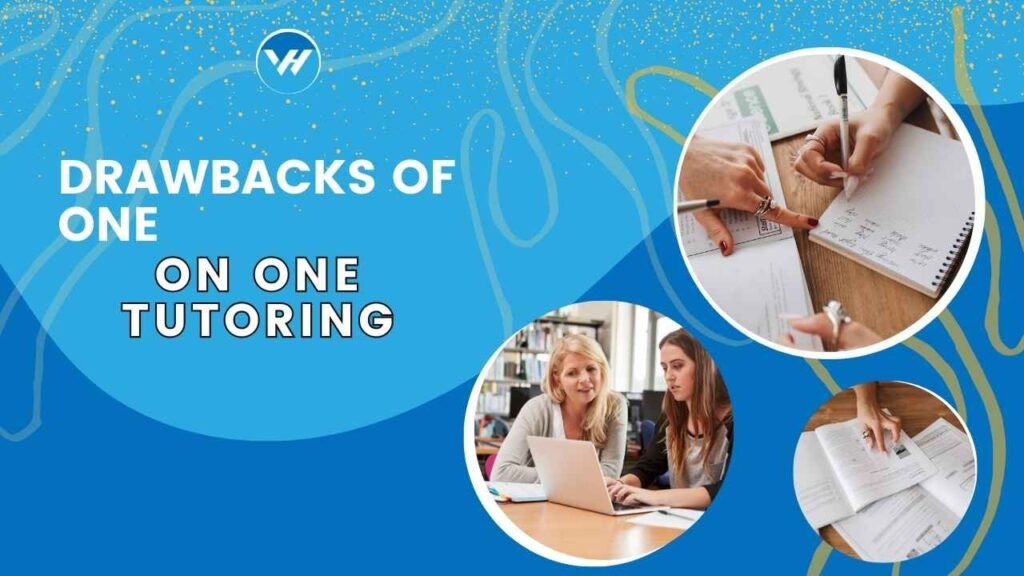One-on-one tutoring has long been seen as a gold standard for personalized education. The idea of having a dedicated tutor focus solely on your academic needs is undoubtedly appealing. However, like any educational method, one-on-one tutoring comes with its own set of drawbacks. It’s crucial to understand these drawbacks to make informed decisions about the best learning strategies for you or your child.

Table of Contents
ToggleHigh Costs
Let’s face it, one-on-one tutoring can be expensive. Tutors often charge hourly rates that can quickly add up, especially if regular sessions are needed. Over time, this can become a significant financial burden, making it less accessible for many families. When you compare the costs of one-on-one tutoring to other learning methods, such as group tutoring or online courses, the price difference can be quite stark.
Limited Availability
Finding a qualified tutor isn’t always easy. Good tutors can be hard to come by, and geographic limitations can further narrow down your options. Even if you find the perfect tutor, scheduling conflicts may arise, making it difficult to maintain consistent tutoring sessions. This limited availability can hinder the learning process and lead to frustration.
Dependency and Lack of Independence
One major downside of one-on-one tutoring is the potential for dependency. When students rely heavily on their tutors, they may struggle to develop independent study skills. This can inhibit their ability to solve problems on their own, which is a crucial skill for academic success and beyond. Over-reliance on a tutor can create a crutch that prevents students from becoming self-sufficient learners.
Limited Exposure to Diverse Perspectives
In a one-on-one tutoring setting, students are often exposed to a single viewpoint – that of their tutor. This can limit their exposure to diverse perspectives and ideas. The lack of peer interaction means that students miss out on the benefits of collaborative learning and critical discussions, which are vital for developing well-rounded thinking skills.
Compatibility Issues
Not every tutor-student pairing is a match made in heaven. Personality clashes and teaching style mismatches can make tutoring sessions less effective. Building a rapport with a tutor takes time, and if the chemistry isn’t there, it can be challenging to achieve the desired learning outcomes. Compatibility issues can lead to frustration and decreased motivation for both the tutor and the student.
Potential for Reduced Motivation
Speaking of motivation, one-on-one tutoring can sometimes have the opposite effect of what’s intended. The lack of a competitive spirit, which is often present in group learning environments, can lead to complacency. Personalized attention might make students too comfortable, reducing their drive to push themselves. This decreased self-driven learning can hinder long-term academic growth.
Safety Concerns
Safety is a legitimate concern when it comes to one-on-one tutoring. Meeting tutors in person, especially if they are not well-vetted, poses risks. Online tutoring also has its own set of safety issues, including the potential for cyberbullying and exposure to inappropriate content. Ensuring the safety and security of students is paramount, but it can be challenging to guarantee.
Limited Scope of Learning
One-on-one tutoring often focuses on immediate academic needs, which means students might miss out on a broader educational experience. While addressing specific subjects or assignments, tutors might not cover other important areas, such as extracurricular activities or holistic learning approaches. This narrow focus can limit students’ overall growth and development.
Time Constraints
Fixed tutoring schedules can be restrictive. Students have to adhere to set times for their sessions, which might conflict with other important activities. This rigidity can reduce flexibility for spontaneous learning and exploration. Balancing tutoring with extracurricular activities and personal time can be challenging, leading to increased stress and burnout.
Emotional and Social Impact
The emotional and social impact of one-on-one tutoring shouldn’t be overlooked. The pressure to perform well in a personalized setting can lead to increased anxiety and stress. Additionally, the lack of interaction with peers can result in social isolation. Group learning environments provide opportunities for socialization and collaboration, which are essential for emotional and social development.
Technology and Resource Limitations
One-on-one tutoring can sometimes rely on outdated or limited resources. While tutors might use physical textbooks or traditional methods, modern educational tools and interactive platforms offer a richer learning experience. The dependence on limited resources can hinder students from accessing a wide range of learning materials and technologies that can enhance their education.
Limited Feedback and Assessment
Feedback and assessment in one-on-one tutoring can be subjective. Without standardized testing and consistent progress tracking, it can be difficult to measure a student’s improvement accurately. This inconsistency can lead to gaps in learning and a lack of clear direction for future sessions.
Alternatives to One-on-One Tutoring
Fortunately, there are alternatives to one-on-one tutoring that can address many of its drawbacks. Group tutoring sessions offer the benefits of collaborative learning and peer interaction. Online tutoring platforms provide flexible scheduling and access to a wide range of tutors. Self-study resources and educational apps empower students to take control of their learning journey.
The Role of Virtual Help
Enter Virtual Help – a modern solution for tutoring needs. Virtual Help is an online platform that connects students with qualified tutors through its iOS and Android app. It offers the flexibility of scheduling, access to a diverse pool of tutors, and a secure learning environment. Virtual Help addresses the drawbacks of one-on-one tutoring by providing a comprehensive and convenient alternative.
Conclusion
While one-on-one tutoring has its advantages, it’s important to be aware of its drawbacks. High costs, limited availability, dependency issues, and other factors can impact the effectiveness of personalized tutoring. Exploring alternatives like group sessions and online platforms such as Virtual Help can offer more balanced and accessible solutions. Ultimately, choosing the right tutoring method depends on individual needs and preferences.
FAQs
- How can I find a qualified tutor?
- You can find qualified tutors through reputable tutoring centers, online platforms like Virtual Help, and personal recommendations.
- What are the cost-effective alternatives to one-on-one tutoring?
- Group tutoring sessions, online courses, and self-study resources are cost-effective alternatives.
- How does Virtual Help ensure the quality of its tutors?
- Virtual Help rigorously screens its tutors, ensuring they have the necessary qualifications and experience to provide quality education.
- Can group tutoring be as effective as one-on-one tutoring?
- Yes, group tutoring can be effective by fostering collaborative learning and providing diverse perspectives.
- What are the safety measures for online tutoring?
- Online tutoring platforms like Virtual Help implement strict safety protocols, including background checks and secure communication channels, to ensure a safe learning environment.





